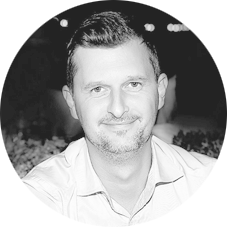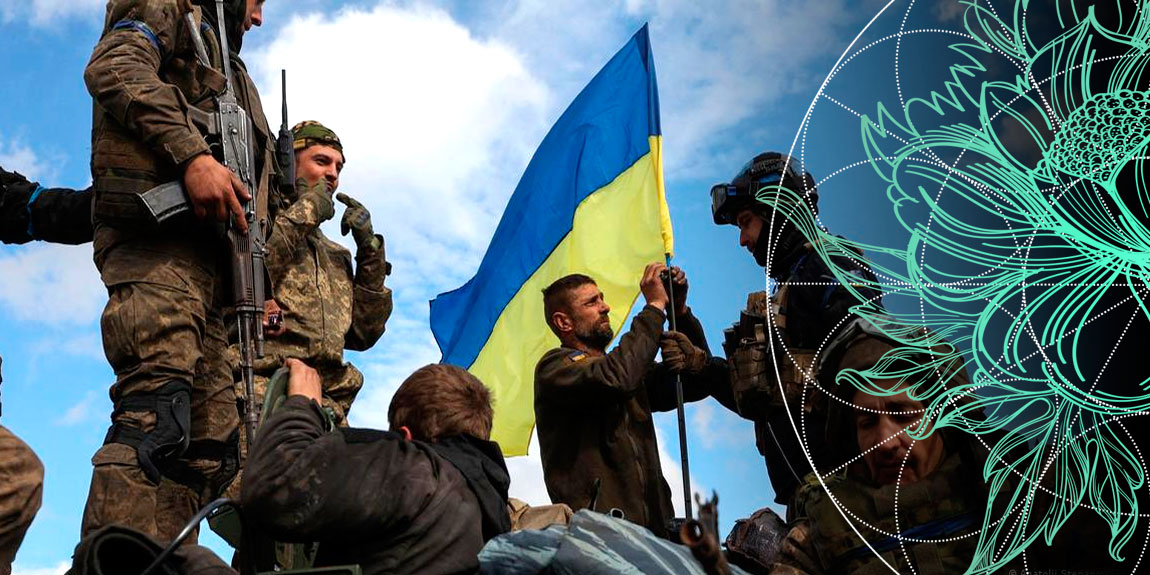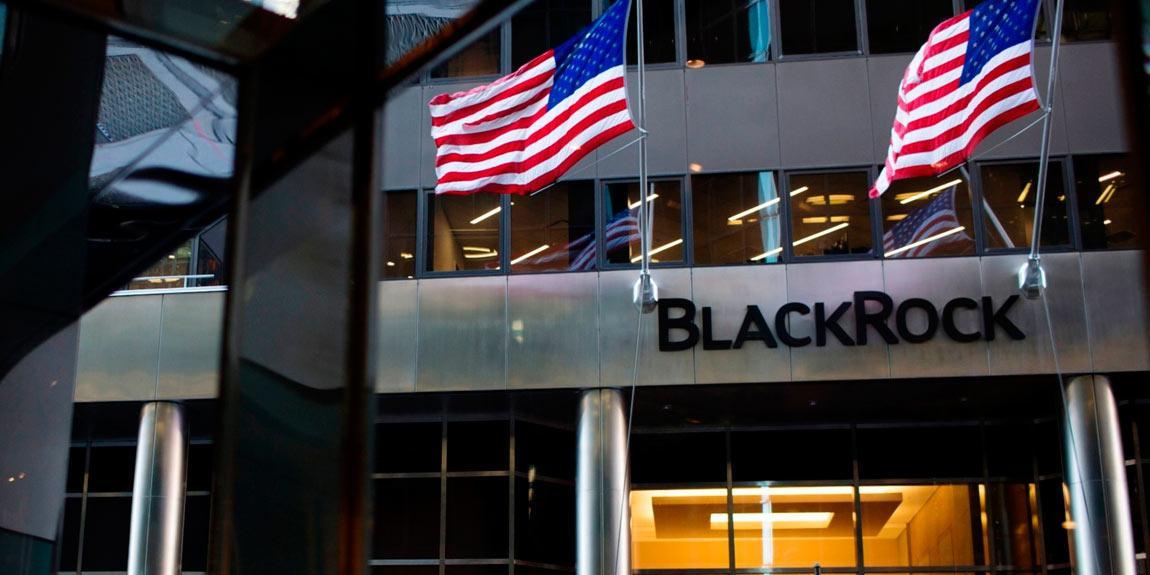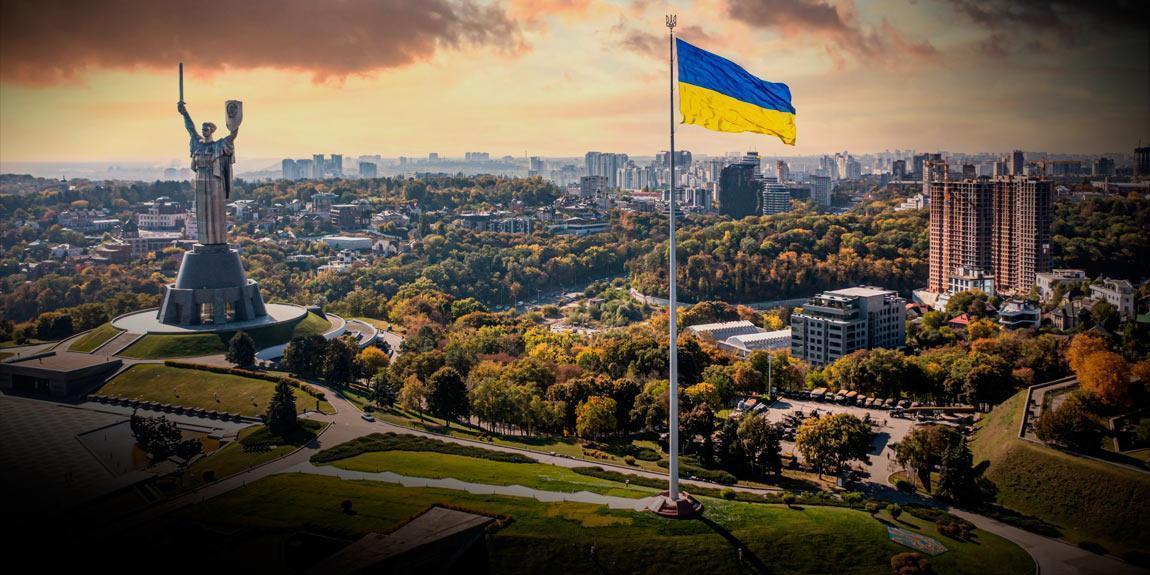
Oleg Parashchak — CEO & Owner Finance Media Holding: Beinsure & Forinsurer
Oleg Parashchak is Chief Executive Officer and Owner Finance Media Holding. He is Editor-in-Chief at Beinsure.com and Forinsurer.com — Digital Media about insurance, reinsurance, investments & crypto.
Expertise: Specializing in Re/Insurance, InsurTech, Digital Media, Investing, Blockchain & Cryptocurency.
LinkedIn | Crunchbase | Twitter | Facebook
Finance Media Holding is the proud proprietor of Forinsurer, an online magazine in Ukraine specializing in insurance, reinsurance technologies, and InsurTech. With an impressive annual readership of more than 1.8 mn, Forinsurer has become a leading source of information in this field. Oleg also CEO at Insurance TOP magazine – print media about Ukrainian insurance market data and insurance companies rankings.
Oleg have more than 22+ years of professional experience in Insurance, Media, Advertising and B2B Sales. He has created and built a B2B & B2C Digital Platform & Media in the insurance market.
Oleg also has been the CEO of the Ukrainian Scientific Research Institute of Law and Economic Research since February 1, 2004, and has contributed to the economy of Ukraine. It is the only academic, professional publication in Ukraine whose purpose is to showcase the scientific accomplishments in Economic Law and explore the connection between economics and law, aligning with the research areas of the Department of Economics of NAS of Ukraine and Institute of Economic.
Prior Oleg worked as the Director of the Department of Analytics and Research at the League of Insurance Organizations of Ukraine. Department of Analytics and Research at the LIOU was established in 1992; the Insurance Market Association of Ukraine is vital in protecting members and others in the insurance market.
His work includes a profound analysis of both the insurance and investment markets. In today’s rapidly changing economic landscape, understanding the complexities of these two sectors is crucial for making informed decisions. With his research, he brings an in-depth of knowledge, offering readers fresh insights into market trends and potential opportunities.
Oleg’s efforts in organizing the Insurance TOP’s National Award have undoubtedly made a significant impact in fostering networking and knowledge exchange among industry professionals. This event has created a platform for individuals to connect, collaborate, and share their expertise by bringing together top players from various insurance companies. This award ceremony recognizes the outstanding achievements of insurance professionals and provides an opportunity for participants to learn from each other through panel discussions and workshops.
Oleg Parashchak pursued higher education with a dedicated focus on economics and business management, earning a Master’s degree in Business Economics for Managers from Taras Shevchenko National University of Kyiv. Before this, he graduated with a Master’s degree in Economics and Technologies from The National University of Food Technologies.

 " class="attachment-csco-thumbnail size-csco-thumbnail wp-post-image" alt="World’s Most Valuable Insurance Brands in 2024">
" class="attachment-csco-thumbnail size-csco-thumbnail wp-post-image" alt="World’s Most Valuable Insurance Brands in 2024">
 " class="attachment-csco-thumbnail size-csco-thumbnail wp-post-image" alt="Top 10 Risks for the Global Insurance Industry in 2024">
" class="attachment-csco-thumbnail size-csco-thumbnail wp-post-image" alt="Top 10 Risks for the Global Insurance Industry in 2024">
 " class="attachment-csco-thumbnail size-csco-thumbnail wp-post-image" alt="Risk Environment for Global Mobility Sector Continues to Grow">
" class="attachment-csco-thumbnail size-csco-thumbnail wp-post-image" alt="Risk Environment for Global Mobility Sector Continues to Grow">
 " class="attachment-csco-thumbnail size-csco-thumbnail wp-post-image" alt="2024's Top-Performing Insurance and InsurTech Stocks">
" class="attachment-csco-thumbnail size-csco-thumbnail wp-post-image" alt="2024's Top-Performing Insurance and InsurTech Stocks">
 " class="attachment-csco-thumbnail size-csco-thumbnail wp-post-image" alt="Largest US Corporate Bankruptcy Filings Gained More Momentum">
" class="attachment-csco-thumbnail size-csco-thumbnail wp-post-image" alt="Largest US Corporate Bankruptcy Filings Gained More Momentum">
 " class="attachment-csco-thumbnail size-csco-thumbnail wp-post-image" alt="Cyber Insurance Poses Significant Risks to Re/Insurers' Stability">
" class="attachment-csco-thumbnail size-csco-thumbnail wp-post-image" alt="Cyber Insurance Poses Significant Risks to Re/Insurers' Stability">
 " class="attachment-csco-thumbnail size-csco-thumbnail wp-post-image" alt="Global Landscape of Insurance Digital Transformation">
" class="attachment-csco-thumbnail size-csco-thumbnail wp-post-image" alt="Global Landscape of Insurance Digital Transformation">
 " class="attachment-csco-thumbnail size-csco-thumbnail wp-post-image" alt="New Opportunities for Transport & Logistics Supply Chains Insurance">
" class="attachment-csco-thumbnail size-csco-thumbnail wp-post-image" alt="New Opportunities for Transport & Logistics Supply Chains Insurance">
 " class="attachment-csco-thumbnail size-csco-thumbnail wp-post-image" alt="2024 North American M&A Activity – A Study of Market Trends">
" class="attachment-csco-thumbnail size-csco-thumbnail wp-post-image" alt="2024 North American M&A Activity – A Study of Market Trends">
 " class="attachment-csco-thumbnail size-csco-thumbnail wp-post-image" alt="Insured Losses from Noto Peninsula Earthquake in Japan Forcasts">
" class="attachment-csco-thumbnail size-csco-thumbnail wp-post-image" alt="Insured Losses from Noto Peninsula Earthquake in Japan Forcasts">
 " class="attachment-csco-thumbnail size-csco-thumbnail wp-post-image" alt="Largest Natural Disasters Review: Thunderstorms & Earthquakes Cost">
" class="attachment-csco-thumbnail size-csco-thumbnail wp-post-image" alt="Largest Natural Disasters Review: Thunderstorms & Earthquakes Cost">
 " class="attachment-csco-thumbnail size-csco-thumbnail wp-post-image" alt="Monitoring of Systemic Risks of Insurance Companies in 2024">
" class="attachment-csco-thumbnail size-csco-thumbnail wp-post-image" alt="Monitoring of Systemic Risks of Insurance Companies in 2024">
 " class="attachment-csco-thumbnail size-csco-thumbnail wp-post-image" alt="Global Insurance Market: Premiums, Profitability, Risk Assessment">
" class="attachment-csco-thumbnail size-csco-thumbnail wp-post-image" alt="Global Insurance Market: Premiums, Profitability, Risk Assessment">
 " class="attachment-csco-thumbnail size-csco-thumbnail wp-post-image" alt="UK Insurance Market: Life & Non-Life Sector Outlook for 2024">
" class="attachment-csco-thumbnail size-csco-thumbnail wp-post-image" alt="UK Insurance Market: Life & Non-Life Sector Outlook for 2024">
 " class="attachment-csco-thumbnail size-csco-thumbnail wp-post-image" alt="Unity Facility: Risk Mitigation for Ukrainian Grain Exports in Global Insurance">
" class="attachment-csco-thumbnail size-csco-thumbnail wp-post-image" alt="Unity Facility: Risk Mitigation for Ukrainian Grain Exports in Global Insurance">
 " class="attachment-csco-thumbnail size-csco-thumbnail wp-post-image" alt="Regulation and Taxation of Crypto Assets in Ukraine">
" class="attachment-csco-thumbnail size-csco-thumbnail wp-post-image" alt="Regulation and Taxation of Crypto Assets in Ukraine">
 " class="attachment-csco-thumbnail size-csco-thumbnail wp-post-image" alt="Renters Insurance Cost & Coverage. How to Save Money?">
" class="attachment-csco-thumbnail size-csco-thumbnail wp-post-image" alt="Renters Insurance Cost & Coverage. How to Save Money?">
 " class="attachment-csco-thumbnail size-csco-thumbnail wp-post-image" alt="Insured Losses from Winter Storm Ciarán Forecast">
" class="attachment-csco-thumbnail size-csco-thumbnail wp-post-image" alt="Insured Losses from Winter Storm Ciarán Forecast">
 " class="attachment-csco-thumbnail size-csco-thumbnail wp-post-image" alt="2023 Global Natural Catastrophes: Fatality, Economic & Insured Loss">
" class="attachment-csco-thumbnail size-csco-thumbnail wp-post-image" alt="2023 Global Natural Catastrophes: Fatality, Economic & Insured Loss">
 " class="attachment-csco-thumbnail size-csco-thumbnail wp-post-image" alt="Why Do Insurers & Financial Institutions Need Tokenization?">
" class="attachment-csco-thumbnail size-csco-thumbnail wp-post-image" alt="Why Do Insurers & Financial Institutions Need Tokenization?">
 " class="attachment-csco-thumbnail size-csco-thumbnail wp-post-image" alt="Why Greater War Risk Insurance is so Important for Ukraine?">
" class="attachment-csco-thumbnail size-csco-thumbnail wp-post-image" alt="Why Greater War Risk Insurance is so Important for Ukraine?">
 " class="attachment-csco-thumbnail size-csco-thumbnail wp-post-image" alt="European Insurance Corporations' Investment, Assets & Liabilities in 2023">
" class="attachment-csco-thumbnail size-csco-thumbnail wp-post-image" alt="European Insurance Corporations' Investment, Assets & Liabilities in 2023">
 " class="attachment-csco-thumbnail size-csco-thumbnail wp-post-image" alt="Solvency II for EU & UK Insurers: Review Are Approaching Completion">
" class="attachment-csco-thumbnail size-csco-thumbnail wp-post-image" alt="Solvency II for EU & UK Insurers: Review Are Approaching Completion">
 " class="attachment-csco-thumbnail size-csco-thumbnail wp-post-image" alt="Fitch Ratings Revised Global Reinsurance Sector Forecasts for 2024">
" class="attachment-csco-thumbnail size-csco-thumbnail wp-post-image" alt="Fitch Ratings Revised Global Reinsurance Sector Forecasts for 2024">
 " class="attachment-csco-thumbnail size-csco-thumbnail wp-post-image" alt="How Does Cyber Security Hygiene Reduce the Risk of Cyberattacks?">
" class="attachment-csco-thumbnail size-csco-thumbnail wp-post-image" alt="How Does Cyber Security Hygiene Reduce the Risk of Cyberattacks?">
 " class="attachment-csco-thumbnail size-csco-thumbnail wp-post-image" alt="Global Re/Insurance Industry Faces in Catastrophe Losses">
" class="attachment-csco-thumbnail size-csco-thumbnail wp-post-image" alt="Global Re/Insurance Industry Faces in Catastrophe Losses">
 " class="attachment-csco-thumbnail size-csco-thumbnail wp-post-image" alt="Australian Insurance Market Statistics for 1H 2023">
" class="attachment-csco-thumbnail size-csco-thumbnail wp-post-image" alt="Australian Insurance Market Statistics for 1H 2023">
 " class="attachment-csco-thumbnail size-csco-thumbnail wp-post-image" alt="How the New Solvency II Reforms Boost the UK Insurance Market?">
" class="attachment-csco-thumbnail size-csco-thumbnail wp-post-image" alt="How the New Solvency II Reforms Boost the UK Insurance Market?">
 " class="attachment-csco-thumbnail size-csco-thumbnail wp-post-image" alt="7 Simple Steps How to Buy Life Insurance Policy">
" class="attachment-csco-thumbnail size-csco-thumbnail wp-post-image" alt="7 Simple Steps How to Buy Life Insurance Policy">
 " class="attachment-csco-thumbnail size-csco-thumbnail wp-post-image" alt="Natural Disaster Trends. Top 10 Costliest Economic & Insured Loss Events (1900-2023)">
" class="attachment-csco-thumbnail size-csco-thumbnail wp-post-image" alt="Natural Disaster Trends. Top 10 Costliest Economic & Insured Loss Events (1900-2023)">
 " class="attachment-csco-thumbnail size-csco-thumbnail wp-post-image" alt="Global Natural Disasters Figures: $100 bn Insured Losses">
" class="attachment-csco-thumbnail size-csco-thumbnail wp-post-image" alt="Global Natural Disasters Figures: $100 bn Insured Losses">
 " class="attachment-csco-thumbnail size-csco-thumbnail wp-post-image" alt="U.S. Workers Compensation Insurers Were Able to Underwrite Profitably">
" class="attachment-csco-thumbnail size-csco-thumbnail wp-post-image" alt="U.S. Workers Compensation Insurers Were Able to Underwrite Profitably">
 " class="attachment-csco-thumbnail size-csco-thumbnail wp-post-image" alt="2023 U.S. Insured Losses from Hurricanes Have Risen over the 15 Years">
" class="attachment-csco-thumbnail size-csco-thumbnail wp-post-image" alt="2023 U.S. Insured Losses from Hurricanes Have Risen over the 15 Years">
 " class="attachment-csco-thumbnail size-csco-thumbnail wp-post-image" alt="Reinsurance Rates for U.S. & Florida NatCat Policies: 2023 Renewal Trends">
" class="attachment-csco-thumbnail size-csco-thumbnail wp-post-image" alt="Reinsurance Rates for U.S. & Florida NatCat Policies: 2023 Renewal Trends">
 " class="attachment-csco-thumbnail size-csco-thumbnail wp-post-image" alt="Reinsurance Market is a Critical Part of Florida’s Insurance System">
" class="attachment-csco-thumbnail size-csco-thumbnail wp-post-image" alt="Reinsurance Market is a Critical Part of Florida’s Insurance System">
 " class="attachment-csco-thumbnail size-csco-thumbnail wp-post-image" alt="FATF Updates Guidance on Virtual Crypto Assets - NFT, DeFi & Stablecoin's Standards">
" class="attachment-csco-thumbnail size-csco-thumbnail wp-post-image" alt="FATF Updates Guidance on Virtual Crypto Assets - NFT, DeFi & Stablecoin's Standards">
 " class="attachment-csco-thumbnail size-csco-thumbnail wp-post-image" alt="Insured Losses from Major Natural Catastrophes in H1 2023 Estimated $23 bn">
" class="attachment-csco-thumbnail size-csco-thumbnail wp-post-image" alt="Insured Losses from Major Natural Catastrophes in H1 2023 Estimated $23 bn">
 " class="attachment-csco-thumbnail size-csco-thumbnail wp-post-image" alt="U.S. Life Insurance Sector Outlook Remains Neutral">
" class="attachment-csco-thumbnail size-csco-thumbnail wp-post-image" alt="U.S. Life Insurance Sector Outlook Remains Neutral">
 " class="attachment-csco-thumbnail size-csco-thumbnail wp-post-image" alt="Lightning-Caused U.S. Homeowners Insurance: Claims & Losses">
" class="attachment-csco-thumbnail size-csco-thumbnail wp-post-image" alt="Lightning-Caused U.S. Homeowners Insurance: Claims & Losses">
 " class="attachment-csco-thumbnail size-csco-thumbnail wp-post-image" alt="Why Insurers Must Pay Attention to Millennials? How to Get their Attention?">
" class="attachment-csco-thumbnail size-csco-thumbnail wp-post-image" alt="Why Insurers Must Pay Attention to Millennials? How to Get their Attention?">
 " class="attachment-csco-thumbnail size-csco-thumbnail wp-post-image" alt="Rankings Insurance MGA Groups Worldwide by Revenues: Type & Region">
" class="attachment-csco-thumbnail size-csco-thumbnail wp-post-image" alt="Rankings Insurance MGA Groups Worldwide by Revenues: Type & Region">
 " class="attachment-csco-thumbnail size-csco-thumbnail wp-post-image" alt="Global Generative AI in Insurance Market Size Worth $5,5 bn by 2032">
" class="attachment-csco-thumbnail size-csco-thumbnail wp-post-image" alt="Global Generative AI in Insurance Market Size Worth $5,5 bn by 2032">
 " class="attachment-csco-thumbnail size-csco-thumbnail wp-post-image" alt="Global Insurance Broking Rankings. Top 15 Broker Groups by Revenues">
" class="attachment-csco-thumbnail size-csco-thumbnail wp-post-image" alt="Global Insurance Broking Rankings. Top 15 Broker Groups by Revenues">
 " class="attachment-csco-thumbnail size-csco-thumbnail wp-post-image" alt="How to Build AI-Driven Finance & Insurance Company?">
" class="attachment-csco-thumbnail size-csco-thumbnail wp-post-image" alt="How to Build AI-Driven Finance & Insurance Company?">
 " class="attachment-csco-thumbnail size-csco-thumbnail wp-post-image" alt="Most Richest People in the World 2024. TOP 50 Billionaires List (April)">
" class="attachment-csco-thumbnail size-csco-thumbnail wp-post-image" alt="Most Richest People in the World 2024. TOP 50 Billionaires List (April)">
 " class="attachment-csco-thumbnail size-csco-thumbnail wp-post-image" alt="What is Blockchain? 3 Key Elements of the Blockchain Technology">
" class="attachment-csco-thumbnail size-csco-thumbnail wp-post-image" alt="What is Blockchain? 3 Key Elements of the Blockchain Technology">
 " class="attachment-csco-thumbnail size-csco-thumbnail wp-post-image" alt="Types of Telematics Insurance: Usage-Based Insurance, Pay-As-You-Drive & Pay-Per-Mile">
" class="attachment-csco-thumbnail size-csco-thumbnail wp-post-image" alt="Types of Telematics Insurance: Usage-Based Insurance, Pay-As-You-Drive & Pay-Per-Mile">
 " class="attachment-csco-thumbnail size-csco-thumbnail wp-post-image" alt="Space Insurance Industry Outlook: Price & Coverage for Satellites & Space Flight">
" class="attachment-csco-thumbnail size-csco-thumbnail wp-post-image" alt="Space Insurance Industry Outlook: Price & Coverage for Satellites & Space Flight">
 " class="attachment-csco-thumbnail size-csco-thumbnail wp-post-image" alt="Insurers Poorly Prepared for the Increased Losses by Catastrophe & Flooding">
" class="attachment-csco-thumbnail size-csco-thumbnail wp-post-image" alt="Insurers Poorly Prepared for the Increased Losses by Catastrophe & Flooding">
 " class="attachment-csco-thumbnail size-csco-thumbnail wp-post-image" alt="10 Key Technology Strategies for Insurance Companies">
" class="attachment-csco-thumbnail size-csco-thumbnail wp-post-image" alt="10 Key Technology Strategies for Insurance Companies">
 " class="attachment-csco-thumbnail size-csco-thumbnail wp-post-image" alt="Top 20 Cybercrime Predictions for 2024-2025">
" class="attachment-csco-thumbnail size-csco-thumbnail wp-post-image" alt="Top 20 Cybercrime Predictions for 2024-2025">
 " class="attachment-csco-thumbnail size-csco-thumbnail wp-post-image" alt="Big Data in Insurance. Use Cases of Big Data Technology">
" class="attachment-csco-thumbnail size-csco-thumbnail wp-post-image" alt="Big Data in Insurance. Use Cases of Big Data Technology">
 " class="attachment-csco-thumbnail size-csco-thumbnail wp-post-image" alt="10 Dos & Don'ts Of Getting Your First Life Insurance Policy">
" class="attachment-csco-thumbnail size-csco-thumbnail wp-post-image" alt="10 Dos & Don'ts Of Getting Your First Life Insurance Policy">
 " class="attachment-csco-thumbnail size-csco-thumbnail wp-post-image" alt="Top Ranking the World’s Largest Insurance Markets 2024">
" class="attachment-csco-thumbnail size-csco-thumbnail wp-post-image" alt="Top Ranking the World’s Largest Insurance Markets 2024">
 " class="attachment-csco-thumbnail size-csco-thumbnail wp-post-image" alt="Natural Catastrophes & War Made 2022 a Tough Year for Lloyd's Syndicates">
" class="attachment-csco-thumbnail size-csco-thumbnail wp-post-image" alt="Natural Catastrophes & War Made 2022 a Tough Year for Lloyd's Syndicates">
 " class="attachment-csco-thumbnail size-csco-thumbnail wp-post-image" alt="9 Most Effective Insurance Marketing Strategies for Grow Business">
" class="attachment-csco-thumbnail size-csco-thumbnail wp-post-image" alt="9 Most Effective Insurance Marketing Strategies for Grow Business">
 " class="attachment-csco-thumbnail size-csco-thumbnail wp-post-image" alt="15 Most Important Skills, Responsibilities & Roles of Insurance Brokers">
" class="attachment-csco-thumbnail size-csco-thumbnail wp-post-image" alt="15 Most Important Skills, Responsibilities & Roles of Insurance Brokers">
 " class="attachment-csco-thumbnail size-csco-thumbnail wp-post-image" alt="Technologies Will Transform Auto Insurance & Automotive Landscape">
" class="attachment-csco-thumbnail size-csco-thumbnail wp-post-image" alt="Technologies Will Transform Auto Insurance & Automotive Landscape">
 " class="attachment-csco-thumbnail size-csco-thumbnail wp-post-image" alt="How Wearable Technology & Fitness Devices Changing Insurance?">
" class="attachment-csco-thumbnail size-csco-thumbnail wp-post-image" alt="How Wearable Technology & Fitness Devices Changing Insurance?">
 " class="attachment-csco-thumbnail size-csco-thumbnail wp-post-image" alt="Cyber Insurance Market Will Maintains Premium Growth & Underwriting in 2023">
" class="attachment-csco-thumbnail size-csco-thumbnail wp-post-image" alt="Cyber Insurance Market Will Maintains Premium Growth & Underwriting in 2023">
 " class="attachment-csco-thumbnail size-csco-thumbnail wp-post-image" alt="Top Challenges facing Insurance Brokers">
" class="attachment-csco-thumbnail size-csco-thumbnail wp-post-image" alt="Top Challenges facing Insurance Brokers">
 " class="attachment-csco-thumbnail size-csco-thumbnail wp-post-image" alt="Indian Insurance Market FY2022 Results: Scenario, Forcasts & Performance">
" class="attachment-csco-thumbnail size-csco-thumbnail wp-post-image" alt="Indian Insurance Market FY2022 Results: Scenario, Forcasts & Performance">
 " class="attachment-csco-thumbnail size-csco-thumbnail wp-post-image" alt="Global Reinsurance Industry Results FY2022: Capital & Underwriting Performance">
" class="attachment-csco-thumbnail size-csco-thumbnail wp-post-image" alt="Global Reinsurance Industry Results FY2022: Capital & Underwriting Performance">
 " class="attachment-csco-thumbnail size-csco-thumbnail wp-post-image" alt="IAIS Reinsurance Market Survey: Premiums, Assets, Retention & Distribution">
" class="attachment-csco-thumbnail size-csco-thumbnail wp-post-image" alt="IAIS Reinsurance Market Survey: Premiums, Assets, Retention & Distribution">
 " class="attachment-csco-thumbnail size-csco-thumbnail wp-post-image" alt="2023 Global Reinsurance Market – a Hardest Market for Last 30 Years">
" class="attachment-csco-thumbnail size-csco-thumbnail wp-post-image" alt="2023 Global Reinsurance Market – a Hardest Market for Last 30 Years">
 " class="attachment-csco-thumbnail size-csco-thumbnail wp-post-image" alt="Why Casualty Insurance has seen a decline in coverage and pricing?">
" class="attachment-csco-thumbnail size-csco-thumbnail wp-post-image" alt="Why Casualty Insurance has seen a decline in coverage and pricing?">
 " class="attachment-csco-thumbnail size-csco-thumbnail wp-post-image" alt="Usage-Based Auto Insurance Programs Have a Dramatic Increase">
" class="attachment-csco-thumbnail size-csco-thumbnail wp-post-image" alt="Usage-Based Auto Insurance Programs Have a Dramatic Increase">
 " class="attachment-csco-thumbnail size-csco-thumbnail wp-post-image" alt="How ILS Can Support Additional Re/Insurance Capacity for Cyber Risk">
" class="attachment-csco-thumbnail size-csco-thumbnail wp-post-image" alt="How ILS Can Support Additional Re/Insurance Capacity for Cyber Risk">
 " class="attachment-csco-thumbnail size-csco-thumbnail wp-post-image" alt="How Metaverse & Visual Intelligence Can Transform Insurance Industry?">
" class="attachment-csco-thumbnail size-csco-thumbnail wp-post-image" alt="How Metaverse & Visual Intelligence Can Transform Insurance Industry?">
 " class="attachment-csco-thumbnail size-csco-thumbnail wp-post-image" alt="Global FinTech & InsurTech Funding Highlight & Investment Trends">
" class="attachment-csco-thumbnail size-csco-thumbnail wp-post-image" alt="Global FinTech & InsurTech Funding Highlight & Investment Trends">
 " class="attachment-csco-thumbnail size-csco-thumbnail wp-post-image" alt="10 Most Important Global Business Risks for 2023-2024. Allianz Risk Barometer">
" class="attachment-csco-thumbnail size-csco-thumbnail wp-post-image" alt="10 Most Important Global Business Risks for 2023-2024. Allianz Risk Barometer">
 " class="attachment-csco-thumbnail size-csco-thumbnail wp-post-image" alt="Global Aerospace Re/Insurance Market Outlook">
" class="attachment-csco-thumbnail size-csco-thumbnail wp-post-image" alt="Global Aerospace Re/Insurance Market Outlook">
 " class="attachment-csco-thumbnail size-csco-thumbnail wp-post-image" alt="UK Home Insurance Market Research: 70% of Consumers Considers Price First">
" class="attachment-csco-thumbnail size-csco-thumbnail wp-post-image" alt="UK Home Insurance Market Research: 70% of Consumers Considers Price First">
 " class="attachment-csco-thumbnail size-csco-thumbnail wp-post-image" alt="10 Key Benefits of Cloud Computing Technology for Insurance Business">
" class="attachment-csco-thumbnail size-csco-thumbnail wp-post-image" alt="10 Key Benefits of Cloud Computing Technology for Insurance Business">
 " class="attachment-csco-thumbnail size-csco-thumbnail wp-post-image" alt="Best Insurance Digital Marketing Strategy. Definitive Guide">
" class="attachment-csco-thumbnail size-csco-thumbnail wp-post-image" alt="Best Insurance Digital Marketing Strategy. Definitive Guide">
 " class="attachment-csco-thumbnail size-csco-thumbnail wp-post-image" alt="War in Ukraine Slows Growth of Global Re/Insurance Market">
" class="attachment-csco-thumbnail size-csco-thumbnail wp-post-image" alt="War in Ukraine Slows Growth of Global Re/Insurance Market">
 " class="attachment-csco-thumbnail size-csco-thumbnail wp-post-image" alt="CEE Insurance Market Review & War in Ukraine Impacts">
" class="attachment-csco-thumbnail size-csco-thumbnail wp-post-image" alt="CEE Insurance Market Review & War in Ukraine Impacts">
 " class="attachment-csco-thumbnail size-csco-thumbnail wp-post-image" alt="Global Insurer's Structured Securities Investments Outlook">
" class="attachment-csco-thumbnail size-csco-thumbnail wp-post-image" alt="Global Insurer's Structured Securities Investments Outlook">
 " class="attachment-csco-thumbnail size-csco-thumbnail wp-post-image" alt="4 Major Themes for the Global World Economy. Goldman Sachs Outlook 2075">
" class="attachment-csco-thumbnail size-csco-thumbnail wp-post-image" alt="4 Major Themes for the Global World Economy. Goldman Sachs Outlook 2075">
 " class="attachment-csco-thumbnail size-csco-thumbnail wp-post-image" alt="5 Key Trends of European Venture Capital Valuations">
" class="attachment-csco-thumbnail size-csco-thumbnail wp-post-image" alt="5 Key Trends of European Venture Capital Valuations">
 " class="attachment-csco-thumbnail size-csco-thumbnail wp-post-image" alt="Biggest World's Unicorn Startups by Valuation & Venture Capital Raised">
" class="attachment-csco-thumbnail size-csco-thumbnail wp-post-image" alt="Biggest World's Unicorn Startups by Valuation & Venture Capital Raised">
 " class="attachment-csco-thumbnail size-csco-thumbnail wp-post-image" alt="2023 New Customer & Technology Trends in the Changing Insurance Market">
" class="attachment-csco-thumbnail size-csco-thumbnail wp-post-image" alt="2023 New Customer & Technology Trends in the Changing Insurance Market">
 " class="attachment-csco-thumbnail size-csco-thumbnail wp-post-image" alt="Insurance Industry & Country Risk Assessment for the Global Marine P&I Sector Outlook">
" class="attachment-csco-thumbnail size-csco-thumbnail wp-post-image" alt="Insurance Industry & Country Risk Assessment for the Global Marine P&I Sector Outlook">
 " class="attachment-csco-thumbnail size-csco-thumbnail wp-post-image" alt="What Does Pet Insurance Cover and Not Cover? Dog, Cat, Horse & Rabbit Insurance Cost">
" class="attachment-csco-thumbnail size-csco-thumbnail wp-post-image" alt="What Does Pet Insurance Cover and Not Cover? Dog, Cat, Horse & Rabbit Insurance Cost">
 " class="attachment-csco-thumbnail size-csco-thumbnail wp-post-image" alt="The Great Moderation. BlackRock`s Global Macroeconomic & Invest Outlook">
" class="attachment-csco-thumbnail size-csco-thumbnail wp-post-image" alt="The Great Moderation. BlackRock`s Global Macroeconomic & Invest Outlook">
 " class="attachment-csco-thumbnail size-csco-thumbnail wp-post-image" alt="How to Russia's War in Ukraine is Changing the World and Insurance? Defining the Scenarios">
" class="attachment-csco-thumbnail size-csco-thumbnail wp-post-image" alt="How to Russia's War in Ukraine is Changing the World and Insurance? Defining the Scenarios">
 " class="attachment-csco-thumbnail size-csco-thumbnail wp-post-image" alt="How Big Data analytics works & why it matters?">
" class="attachment-csco-thumbnail size-csco-thumbnail wp-post-image" alt="How Big Data analytics works & why it matters?">
 " class="attachment-csco-thumbnail size-csco-thumbnail wp-post-image" alt="How to Succeed Using the Power of the Cloud Technology?">
" class="attachment-csco-thumbnail size-csco-thumbnail wp-post-image" alt="How to Succeed Using the Power of the Cloud Technology?">



